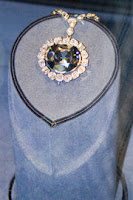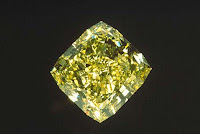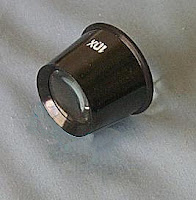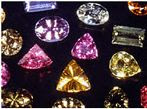Diamonds are cut into a range of shapes that are normally designed to display their two most important features: fire and brilliance. Diamonds must be cut and polished to accentuate these features because rough stones do not show this beauty that diamond gemstones are known to capture.
Diamonds that are not cut to the Tolkowsky's round brilliant shape (or later variations) specifications are well-known as "fancy cuts." fashionable fancy cuts include the baguette (from the French, meaning rod or loaf of bread), marquise, princess cut (square outline), heart, briolette (a form of the rose cut), and pear cuts.
The latest cuts that have been introduced into the jewelry industry are the "cushion" "radiant" (like princess cuts, but with rounded edges instead of square edges) and "Asscher" cuts. Many fancy colored diamonds are now being cut in accordance with these new styles. Normally, these "fancy cuts" are not held to the same stringent standards as Tolkowsky-derived round brilliants and there are less explicit mathematical guidelines of angles which determine a well-cut stone.
Fashion greatly influence popular cuts: the baguette cut—which accentuates a diamond's luster and downplays its fire was very trendy during the Art Deco period, whereas the princess cut—which enhances a diamond's fire rather than its luster—is currently gaining recognition. The princess cut is also popular with diamond cutters: of all the cuts, it wastes the least of the original rough crystal.
During the past decades, new diamond cuts have been developed, often inspired by a modification of an existing cut. Some of these new diamond cuts often have extra facets included. Instead of actual improvements to the art, these newly developed cuts are usually viewed as more of an attempt at branding by diamond sellers.
So, the shape of a diamond is as vital as the cut, and very diverse in connotation, even though the two are interconnected in accentuating the diamond gemstone's brilliance and fire.
Thursday, April 5, 2007
Cuts and Shapes of Diamonds
Posted by gemguy at 3:43 PM 0 comments
Tuesday, March 6, 2007
Secure Those Gemstones: Diamonds, Emeralds, Rubies and Sapphires
As the video below illustrates, you should always secure your diamonds. Both personal in home and business security are very important. So, be careful and secure those gemstones.
Jewelry Shop Robbery in Progress... This thieving/criminal low-life is desperate for those diamonds. The perceived value is always high, along with the portability and ease of liquidation factors, amongst thieves. So always be careful and secure your loose gemstones and jewelry.
Posted by gemguy at 6:12 PM 0 comments
Wednesday, February 28, 2007
The Diamond Gem Stone and its Popularity
Gem Stone convey thoughts of beauty, luster, brilliance, exquisite, sparkling, precious and rarity. About 90 out of nearly 2,000 minerals possess the required beauty and durability to be considered gemstones.
To the jeweler and public, the gemstones most important and familiar that incorporate these distinctive and attractive characteristics are diamond, ruby, sapphire and emerald ― with the diamond, by far, being the most important and popular of the four.
The name “diamond” is commonly conceded to have originated from the Greek word ‘adamas’ which means “evincible.”
Do you recall the famous De Beers ad slogan, “A Diamond is Forever.” Because of hardness, a gem diamond never wears out, nor does it lose its beauty. There is no such thing as a used or secondhand diamond. Unless crushed, stolen or lost, it will last the wear and tear of Centuries with undiminished beauty and brilliance.
A diamond consists of a single element, it is pure crystallized carbon. It is identically chemical with the materials of graphite in lead pencils and charcoal or carbon deposits that collect in an automobile engine. It can be said that “a diamond is a lump of coal that made good under pressure.”
A diamond is without equal as a jewel throughout the world because it is the hardest substance known, cannot be scratched by anything but another diamond, and it has a very high refractive index. This enables it to bend rays of light and disperse, in a blazing fire, all the colors of the rainbow to the eyes of the beholder. The slightest movement of a diamond changes the rainbow, providing an infinite variety of color. This is truly the beauty of light and phenomenon of a well cut and clear diamond.
Speaking of cut and clear diamond, you can learn more about the four C’s of a diamond, which are Cut, Clarity, Carat, and Color here: The four C’s are paramount in grading and valuating a diamond.
The diamond gem stone will never have a match. The physical and optical properties are as different from other gemstones as to make its beauty totally unique. The diamond is known and esteemed throughout the world, the same as gold.
In spite of recessions, inflation, deflation, good times and bad, the diamond has never lost its appeal. It is tradition and a must have item for most women in the western world to receive a diamond engagement and wedding ring when marrying. Truly, like another famous ad slogan and movie proclaims, “Diamonds Are A Girl’s Best Friend.” And indeed, the diamond is the most popular gem stone the world has ever known.
Posted by gemguy at 3:48 PM 0 comments
Thursday, January 25, 2007
THE FOUR C’s of A DIAMOND: Cut, Color, Clarity and Carat
The four C’s are the most important factors to consider when you are shopping for loose diamonds (usually investment grade) or diamond jewelry. The four C’s are paramount in grading and valuating diamonds. Diamonds are as individual as fingerprints, and the diamond you choose will be different from every other diamond in the world, no matter what its size, color or cost. So the four C’s is not only the traditional method of appraising diamonds, it is also most logical. I have listed an explanation of the four C’s below to help you make a wise buying decision when shopping for diamonds.
Cut - Diamond cutting is the art and science of creating a gem-quality diamond out of mined rough. The cut of a diamond describes the manner in which a diamond has been shaped and polished from its beginning form as a rough stone to its final gem proportions. The cut of a diamond describes the quality of workmanship and the angles to which a diamond is cut. Often diamond cut is confused with "shape."
There are mathematical guidelines for the angles and length ratios at which the diamond is supposed to be cut in order to reflect the maximum amount of light. Round brilliant diamonds, the most common, are guided by these specific guidelines, though fancy cut stones are not able to be as accurately guided by mathematical specifics.
A scattering of round-brilliant cut diamonds
shows off the many reflecting facets.
The techniques for cutting diamonds have been developed over hundreds of years, with perhaps the greatest achievements made in 1919 by mathematician and gem enthusiast Marcel Tolkowsky. He developed the round brilliant cut by calculating the ideal shape to return and scatter light when a diamond is viewed from above. The modern round brilliant has 57 facets (polished faces), counting 33 on the crown (the top half), and 24 on the pavilion (the lower half). The girdle is the thin middle part. The function of the crown is to diffuse light into various colors and the pavilion's function to reflect light back through the top of the diamond.
Tolkowsky defines the ideal dimensions to have:
- Table percentage (table diameter divided by overall diameter) = 53%
- Depth percentage (Overall depth divided by the overall diameter) = 59.3%
- Pavilion Angle (Angle between the girdle and the pavilion) = 40.75°
- Crown Angle (Angle between the girdle and the crown) = 34.5°
- Pavilion Depth (Depth of pavilion divided by overall diameter) = 43.1%
- Crown Depth (Depth of crown divided by crown diameter) = 16.2%
The culet is the tiny point or facet at the bottom of the diamond. This should be a negligible diameter, otherwise light leaks out of the bottom. Tolkowsky's ideal dimensions did not include a girdle. However, a thin girdle is required in reality in order to prevent the diamond from easily chipping in the setting. A normal girdle should be about 1%–2% of the overall diameter.
The further the diamond's characteristics are from Tolkowsky's ideal, the less light will be reflected. However, there is a small range in which the diamond can be considered "ideal." Today, because of the relative importance of carat weight in society, many diamonds are often intentionally cut poorly to increase carat weight. There is a financial premium for a diamond that weighs the magical 1.0 carat, so often the girdle is made thicker or the depth is increased. Neither of these tactics make the diamond appear any bigger, and they greatly reduce the sparkle of the diamond. So a poorly cut 1.0 carat diamond may have the same diameter and appear as large as a 0.85 carat diamond. The depth percentage is the overall quickest indication of the quality of the cut of a round brilliant. "Ideal" round brilliant diamonds should not have a depth percentage greater than 62.5%. Another quick indication is the overall diameter. Typically a round brilliant 1.0 carat diamond should have a diameter of about 6.5 mm. Mathematically, the diameter in millimeters of a round brilliant should approximately equal 6.5 times the cube root of carat weight, or 11.1 times the cube root of gram weight, or 1.4 times the cube root of point weight.
"ideal" cuts can be controversial as the definition, brilliance and beauty, is very subjective.
Tolkowsky's mathematical model is now superseded by the Gemological Institute of America (GIA) Facetware software that is the culmination of 20 years of studies on diamond cuts.
New diamond cuts are now all the rage in the diamond industry as for example a design invented in 2003 and called the Genesis cut. This cut differs in shape from the more traditional cuts in its concave surfaces and angles and resembles a 4-pointed star.
Color - A chemically pure and structurally perfect diamond is perfectly transparent with no hue, or color. However, in reality almost no gem-sized natural diamonds are absolutely perfect. The color of a diamond may be affected by chemical impurities and/or structural defects in the crystal lattice. Depending on the hue and intensity of a diamond's coloration, a diamond's color can either detract from or enhance its value. For example, most white diamonds are discounted in price as more yellow hue is detectable, while intense pink or blue diamonds (such as the Hope Diamond) can be dramatically more valuable.

The Hope Diamond located at
the Smithsonian. Its deep blue
coloration is caused by trace
amounts of boron in the diamond.
Most diamonds used as gemstones are basically transparent with little tint, or white diamonds. The most common impurity, nitrogen, replaces a small proportion of carbon atoms in a diamond's structure and causes a yellowish to brownish tint. This effect is present in almost all white diamonds; in only the rarest diamonds is the coloration due to this effect undetectable. The GIA has developed a rating system for color in white diamonds, from "D" to "Z" (with D being "colorless" and Z having a bright yellow coloration), which has been widely adopted in the industry and is universally recognized, superseding several older systems once used in different countries. The GIA system uses a benchmark set of either natural diamonds of known color grade, along with standardized and carefully controlled lighting conditions. Precision-crafted cubic zirconia master sets are also sometimes used in the trade, however the GIA has found these sets to be inaccurate. Diamonds with higher color grades are rarer, in higher demand, and therefore more expensive, than lower color grades. Oddly enough, diamonds graded Z are also rare, and the bright yellow color is also highly valued. Diamonds graded D-F are considered "colorless", G-J are considered "near-colorless", K-M are "slightly colored". N-Y usually appear light yellow or brown.
Yellow Diamond
In contrast to yellow or brown hues, diamonds of other colors are much rarer and more valuable. While even a pale pink or blue hue may increase the value of a diamond, more intense coloration is usually considered more desirable and commands the highest prices. A variety of impurities and structural imperfections cause different colors in diamonds, including yellow, pink, blue, red, green, brown, and other hues. Diamonds with unusual or intense coloration are sometimes labeled "fancy" by the diamond industry. Intense yellow coloration is considered one of the fancy colors, and is separate from the color grades of white diamonds. Gemologists have developed rating systems for fancy colored diamonds, but they are not in common use because of the relative rarity of colored diamonds.
Clarity is a measure of internal imperfections of a diamond called inclusions. Inclusions may be crystals of a foreign material or another diamond crystal, or structural imperfections such as tiny cracks that can appear whitish or cloudy. The number, size, color, relative location, orientation, and visibility of inclusions can all affect the relative clarity of a diamond. The GIA and other organizations have developed systems to grade clarity, which are based on those inclusions which are visible to a trained professional when a diamond is viewed under 10x magnification. Most inclusions and carbon spots that can affect price significantly can be seen with a 10x loupe (10 power), also called a jeweler's loupe. The public can easily acquire these loupes, at a reasonable price on the internet. Click loupeto check out low cost offers.

10x Power Eye Loupe
Diamonds become increasingly rare when considering higher clarity gradings. Only about 20 percent of all diamonds mined have a clarity rating high enough for the diamond to be considered appropriate for use as a gemstone; the other 80 percent are relegated to industrial use. Of that top 20 percent, a significant portion contains one or more visible inclusions. Those that do not have a visible inclusion are known as "eye-clean" and are preferred by most buyers, although visible inclusions can sometimes be hidden under the setting in a piece of jewelry.
Most inclusions present in gem-quality diamonds do not affect the diamonds' performance or structural integrity. However, large clouds can affect a diamond's ability to transmit and scatter light. Large cracks close to or breaking the surface may reduce a diamond's resistance to fracture.
Diamonds are graded by the major societies on a scale ranging from flawless to imperfect.
Carat: The carat weight measures the mass of a diamond. One carat is defined as a fifth of a gram, or exactly 200 milligrams (about 0.007 ounce). The point unit—equal to one one-hundredth of a carat (0.01 carat, or 2 mg)—is commonly used for diamonds of less than one carat. One carat is 100 points, and 50 points is a 1/2 carat diamond, etc. All else being equal, the value of a diamond increases exponentially in relation to its carat weight, since larger diamonds are both rarer and more desirable for use as gemstones.
The price per carat does not increase smoothly with increasing size. Instead, there are sharp jumps around milestone carat weights, as demand is much higher for diamonds weighing just more than a milestone than for those weighing just less. As an example, a 0.95 carat diamond may have a significantly lower price per carat than a comparable 1.05 carat diamond, because of differences in demand.
A weekly diamond price list, the Rapaport Diamond Report is published by Martin Rapaport, CEO of Rapaport Group of New York, for different diamond cuts, clarity and weights. It is currently considered the de-facto retail price baseline. Jewelers often trade diamonds at negotiated discounts off the Rapaport price (e.g., "R -3%").
Total carat weight (t.c.w.) is a phrase used to describe the total mass of diamonds or other gemstone in a piece of jewelry, when more than one gemstone is used. Diamond solitaire earrings, for example, are usually quoted in t.c.w. when placed for sale, indicating the mass of the diamonds in both earrings and not each individual diamond. T.c.w. is also widely used for diamond necklaces, bracelets and other similar jewelry pieces.
In summary, the carat weight is simply the size of the diamond.
Always use the four C’s when purchasing diamonds. They will help you ascertain the quality and value of any diamond. And will also insure that you’re satisfied with your diamond purchase. So enjoy your diamonds and all the sentimental value that’s gained.
Sources of Information:
United States Gemological Services
Gemological Institute of America (GIA)
Posted by gemguy at 7:43 PM 0 comments
Thursday, January 18, 2007
Every Woman Value and Demand a Gem Stone
Today I will cover several important factors that account for the value of gemstones. They are known as: beauty, demand, durability, portability, rarity and tradition. See yesterday’s post, for explanation of beauty, rarity and durability. Now I will proceed to demand, portability and tradition.
- Demand depends upon the public’s taste and gemstones vary in their demand based on their choice. Diamonds are most in demand or in vogue and have been since the first shiny pebbles were found.
- Portability applies to any small gem stone because it represents a high concentration of value in a small object, allowing the owner to discreetly carry great wealth effectively upon his/her person.
- It has been tradition to own and wear gemstones since during the Medieval Period, simply because of their beauty regarding luster, brilliance, color and in many cases the gem stone “cut.” We must not forget the other important traditional factors, such as: durability, portability, rarity and even tradition itself. For example, in most Western cultures it’s traditional for a bride-to-be to both desire and receive a diamond engagement ring upon proposal, and then a diamond wedding ring during the wedding ceremony. The two famous ad slogans, in my opinion, that promote tradition very much are: “Diamonds Are A Girl’s Best Friend” and “A Diamond is Forever.”
Posted by gemguy at 9:35 AM 0 comments
Wednesday, January 17, 2007
The Meaning of Gem Stone
In all its preciousness and glory a gem stone can be described as specimens of minerals and/or organic materials distinguished by beauty, rarity and durability. Beauty in a gem depends on its transparency, luster or color, and in some cases, a play of color.
Beauty in a gem depends on its transparency, luster or color, and in some cases, a play of color.
The rarer the material in great demand as a gem stone, the higher the value, this in general, defines rarity.
Durability is essentially the ability of a gem stone to resist ordinary wear and tear sufficiently well enough to retain its luster and/or beauty.
Posted by gemguy at 11:42 AM 0 comments